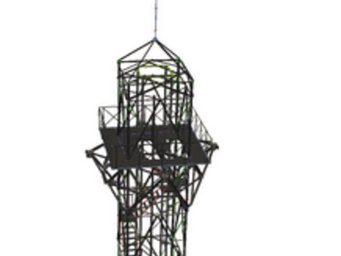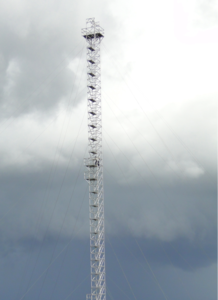325 meters for climate research
The Max Planck Society and the National Institute for Amazon Research INPA are laying the foundations for the ATTO - the German and Brazilian Amazonian Tall Tower Observatory.
On August 15, the starting gun was fired in Brazil for the construction of the climate measurement tower ATTO. Representatives of the Max Planck Society, the Instituto Nacional de Pesquisas da Amazônia (INPA), the Universidade do Estado do Amazonas (UEA), and the Brazilian Ministry for Research poured the foundations for a 325 meter high measuring tower, in the middle of the Amazon rain forest. The Amazonian Tall Tower Observatory, ATTO for short, should provide groundbreaking knowledge and the principles for improved climate models, and will be outfitted with measurement equipment for measuring greenhouse gases, aerosol particles, and collecting weather data. The tower will stand in the largest continuous rain forest in the world, and is therefore of great significance to climate researchers.

"The measurement point is widely without direct human influence, and therefore ideal to investigate the meaning of the forest region for the chemistry and physics of the atmosphere," said Jürgen Kesselmeier from the Max Planck Institute for Chemistry from Mainz, during the ceremony, which took place at the start of construction, about 150 kilometers North of Manaus. He is proud to now be able to touch the first part of this unique research facility.
Kesselmeier, who is coordinating the project from the German side, thanked all those involved in the project, including the former Secretary of State Frieder Meyer-Krahmer from the Federal Ministry of Education and Research (FMER) and Luiz Antonio Barreto de Castro from the Ministério da Ciência e Tecnologia (MCTI), who have enthusiastically supported ATTO.

"With ATTO we can observe our planet even better," said INPA-Director Luiz Renator de França. The measurement tower is of global importance for climate and atmospheric research. In reference to this year's football World Cup, he jokingly added that Brazil and Germany are playing at the same level on this project.
The Brazilian ATTO coordinator Antonio Ocimar Manzi also emphasized the excellent Brazilian and German cooperation during the course of the project, which started in 2009. He predicts that the tower will be completed by the end of the year, meaning that after the installation of the measurement equipment, research data can be collected in 2015.
Concretely, the researchers hope to understand the sources of greenhouse gases such as carbon dioxide, methane and dinitrogen monoxide in the atmosphere, and how to reduce them. In addition, they want to investigate the formation of aerosol particles, which is important for cloud formation.
With its height of 325 meters, the ATTO measurement tower makes it possible to investigate the transport and alteration of air masses through the forest over a distance of several hundred kilometers. In addition, measurement instruments mounted high on the tower will reach into stable air layers, in which for example the carbon dioxide concentration is not exposed to the day - night changes due to plants.

ATTO will be significantly taller than the two existing towers. These 80 meters high towers have already been regularly collecting data on weather conditions, ozone, CO2 volatile organic compounds, and nitrogenous trace gases and aerosols since 2011.
All information will contribute to developing better computer models about the atmosphere and our climate, particularly from the point of view of "Global Climate Change." The ATTO data can also, however, be used as a basis for developing environmental regulations for sustainable development in the Amazon region.
ATTO is managed by the Max Planck Institute for Chemistry in Mainz on the German side, and the Institute for Amazon Research (INPA) on the Brazilian side. It is part of a research project financed together with Brazil, which has been funded by the Federal Ministry for Education and Research for the period from 2010 to 2015, with €4.5 million.
The ATTO tower is constructed out of steel with a base area of 3x3 meters. It will be stabilized with wire cables running to the forest floor, coming off the four levels of the tower. At various heights on the tower, platforms will be installed for the scientific measurement equipment. The researchers will get to the top using a mechanical elevator or stairs. The steel construction of the ATTO tower was built in the South Brazilian harbor town of Curitiba and was transported to the site in the rain forest (131 meters altitude) during a period of two weeks with six large HGVs on a pushing unit, across the Rio Madeira, the Amazon and the Rio Uatuma.






